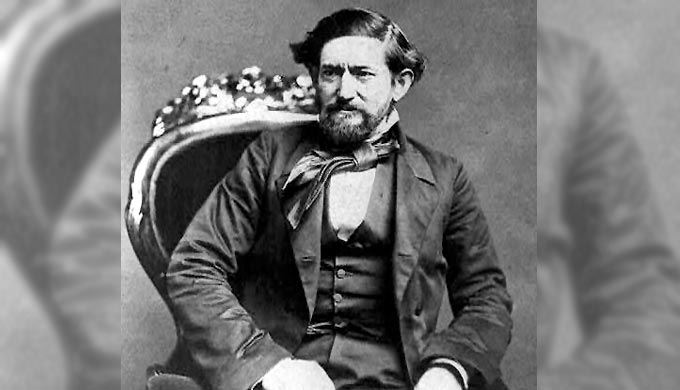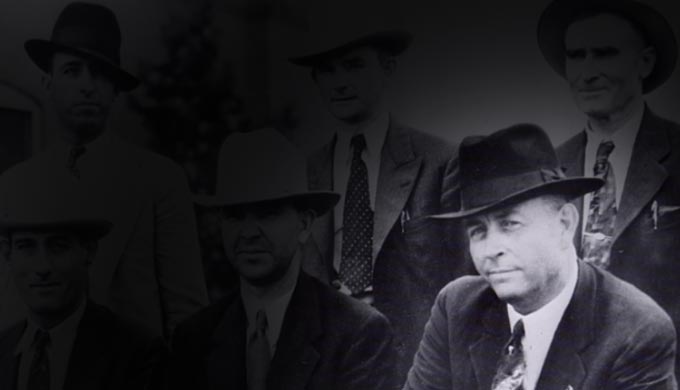 www.curtrich.com
www.curtrich.com
History
3 Famous Texas Rangers (Not Including Chuck Norris)
We recently published an article about some notorious Texas outlaws, so it’s only fitting that we take a look at those living on the other side of the law. The Texas Rangers are a premiere crime-fighting force and have become a worldwide symbol of Texans’ indomitable spirit, violent history, and fondness for burly men in jeans and cowboy hats. Founded in the mid-1800s, the Texas Rangers were informally created by Stephen F. Austin, and played a role in the early founding of the Republic of Texas and the governments that succeeded it. Although Chuck Norris might be the most widely recognized “Texas Ranger”, here are 3 more that deserve our attention:
Captain John “Jack” Coffee Hays (January 28, 1817 – April 21, 1883)

Photo: wikipedia.org
An old school Ranger, Captain John “Jack” Coffee Hays set the Rangers’ standard for toughness, grit and no-nonsense efficiency. He earned his reputation by winning countless conflicts with Native Americans in West Texas (particularly the Comanches) as well as decisive battles against Mexican soldiers and raiders in some of the roughest conditions imaginable. By comparison, rangers after him had it easy.
A Tennessee native, Hays was 19 when he traveled to the Republic of Texas in 1836. Thanks to his family connections he was appointed to the Texas Rangers by Sam Houston himself. In the early part of his career he fought the Native Americans and protected settlers moving west, but when Mexico invaded in 1842 he found himself in command of the entire Texian defense force. He continued to play a pivotal role during the Mexican-American war a few years after and served with distinction, winning the admiration of his men. Once that ended Hays took a less violent job as Federal Indian Agent in New Mexico and Arizona, and his violent military and law-enforcement career came to a close. In his later years he moved to California and became the first sheriff of San Francisco County, and by the time the Civil War came along he was comfortably retired from military life. His legacy lives on through Hays County, Texas.
Captain Bill McDonald (September 28, 1852 – January 15, 1918)

Photo: pinterest.com
William Jesse McDonald, or simply Bill, took Hays’ attitude and mixed in a bit of humor and hubris. It can be summed up in one succinct little anecdote:
When Bill McDonald was sent to Dallas to prevent an illegal prizefight, he showed up at the train station alone. The Dallas mayor was shocked and asked him, “where are the others?”
To which McDonald replied, “Hell, ain’t I enough? There’s only one prize fight!”
When McDonald was young he moved from Mississippi to work in a grocery store in Wood County, Texas. He developed an interest in law enforcement and promptly become deputy sheriff. This career took him to different counties where he fought against gangs, cattle rustlers and other criminal elements until he finally became Ranger at the age of 31.
McDonald was one of the “Four Great Captains” of Texas Rangers, and interestingly enough he never had to kill anyone in a gun fight. He was known for his way with words – whether through tact or intimidation. Later in his career McDonald even briefly served as a bodyguard to President Theodore Roosevelt and by his 50s had moved to Austin where to work in government. Throughout his career, he was known as “a man who would charge hell with a bucket of water.”
Frank Hamer(March 17, 1884 – July 10, 1955)

Photo: wikipedia.org
Hamer, the only native Texan of the three, was a Texas Ranger based in Austin. During Hamer’s time, the organization was undergoing deep transformations and the west was quickly becoming closer and tamer. Many of his colleagues were trading out horses for cars.
He is most famous for tracking down and killing Bonnie and Clyde, but he was active during generally violent times when bank robberies were an epidemic. His career was riddled with gunfights and he quickly became a legend for his accuracy, bravery and uncanny ability to come out on top – no matter the odds. Over the course of his career Hamer had been wounded 17 times, and although he didn’t talk about his gunfights while alive historians argue over the number of men he killed, ranging from a dozen to 70. His favorite weapon was a pearl-handled Single Action Colt .45 revolver he called “Old Lucky.”
However, Hamer wasn’t solely reliant on violence. When the government had explicitly stated that bounties for bank robbers would be doled out only if the robbers were killed, Hamer realized that unscrupulous men were setting up their partners for fake robberies and then killing them to acquire the reward. By going to the press he was able to expose the schemes and have the policy changed – a testament to his quick thinking and ability of non-violent solutions. It was his intelligence as well as his quick hands that allowed him to die peacefully of natural causes in 1955.


